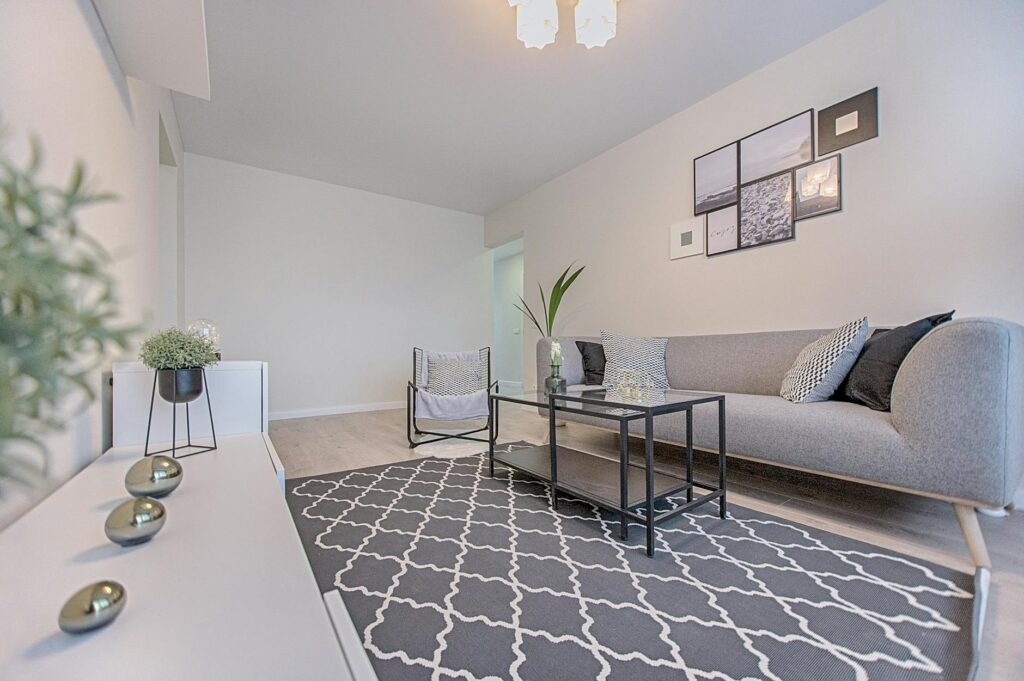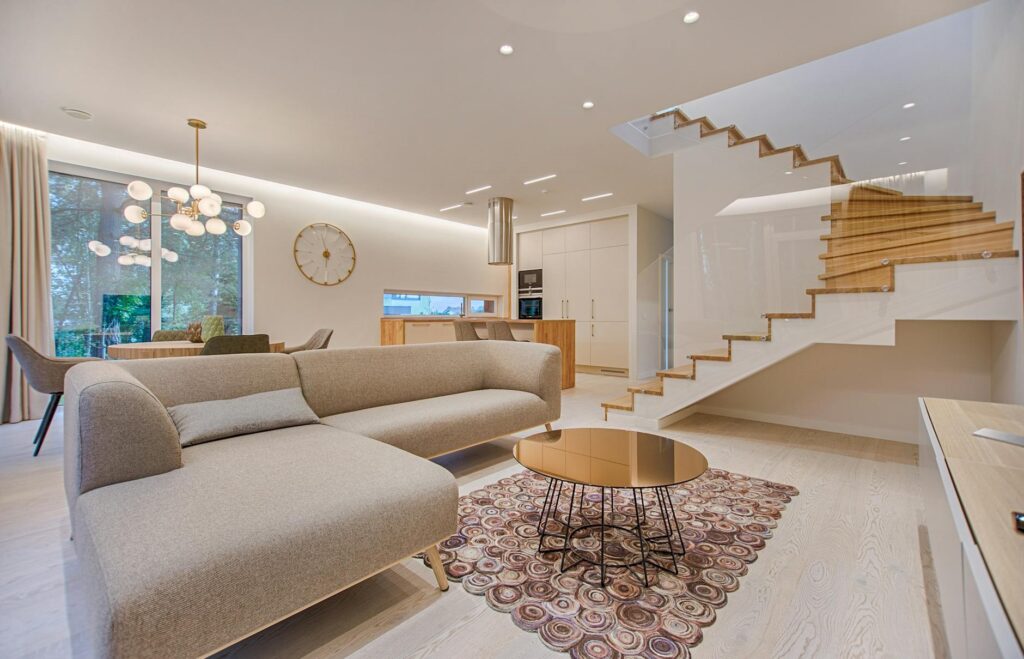
The living room is the heart of the home, a place where we spend time with family, entertain guests, and relax after a long day. Proper decoration of this space can significantly impact our well-being and the room’s functionality. This article will discuss key aspects of decorating a living room, such as choosing a style, colors, furniture, lighting, and accessories.
1. Choosing a Style
The first step in decorating a living room is to determine the style you want to achieve. There are many popular interior design styles, such as:
- Modern: Characterized by simplicity, minimalism, and functionality. It features neutral colors, clean lines, and contemporary materials.
- Scandinavian: Known for its bright, spacious interiors, natural materials, and functional solutions. The color palette mainly includes white, grays, and pastel shades.
- Industrial: Inspired by lofts and industrial spaces. It features raw materials like concrete, metal, and brick.
- Rustic: Warm and cozy, with a lot of wood, natural fabrics, and rustic accessories.
- Classic: Elegant and timeless, with rich fabrics, stylish furniture, and sophisticated details.
Choosing a style will help focus on the appropriate decorative elements and unify the living room’s appearance.

2. Colors
Colors have a significant impact on the atmosphere of an interior. When selecting a color palette, consider both your personal preferences and the room’s function. Here are some tips:
- Light colors: Such as white, beige, or pastel shades, optically enlarge the space and give it a sense of lightness.
- Dark colors: Black, graphite, or dark browns add elegance and depth but can also make the room feel smaller.
- Accent colors: Intense colors like red, green, or navy blue can be used as accents on walls, cushions, or decorations to liven up the interior.
3. Furniture
Furniture is a key element of the living room. It should be both aesthetic and comfortable and functional. Here are some tips for choosing furniture:
- Sofa: The central point of the living room. It is worth investing in a comfortable, well-made sofa that will last for many years.
- Coffee tables: They can be practical and decorative. Choose a model that matches the rest of the interior.
- Shelves and bookcases: Perfect for storing books, ornaments, and other items. They can be open or closed.
- Armchairs and poufs: Add extra seating and can be an interesting decorative accent.
- Dressers and TV cabinets: Practical for storing electronic equipment and other items.
4. Lighting
Lighting plays a crucial role in decorating the living room. It should be varied and adapted to the different functions of the room:
- Main lighting: A ceiling lamp or chandelier that evenly illuminates the entire room.
- Additional lighting: Table lamps, floor lamps, and wall sconces create a cozy atmosphere and can be used for reading or working.
- Spotlighting: Spotlights that highlight specific decorative elements such as paintings or plants.
5. Accessories and Decorations

Accessories and decorations give the living room character and individuality. Here are some ideas for interesting accents:
- Textiles: Cushions, throws, curtains, and rugs add coziness and can be easily changed according to the season.
- Paintings and posters: Art on the walls is a great way to express your style and interests.
- Plants: Add freshness and natural charm. They can be placed on shelves, windowsills, or larger pots on the floor.
- Mirrors: Optically enlarge the space and add elegance.
- Decorative items: Such as candles, glass pictures, vases, books, or figurines that give the interior a personal touch.
Decorating a living room is a process that requires consideration of many aspects, from choosing a style and colors to furniture, lighting, and accessories. The key to success is balancing aesthetics and functionality and tailoring the interior to your needs and preferences. With careful planning and attention to detail, you can create a space where you will feel comfortable and enjoy spending time.
